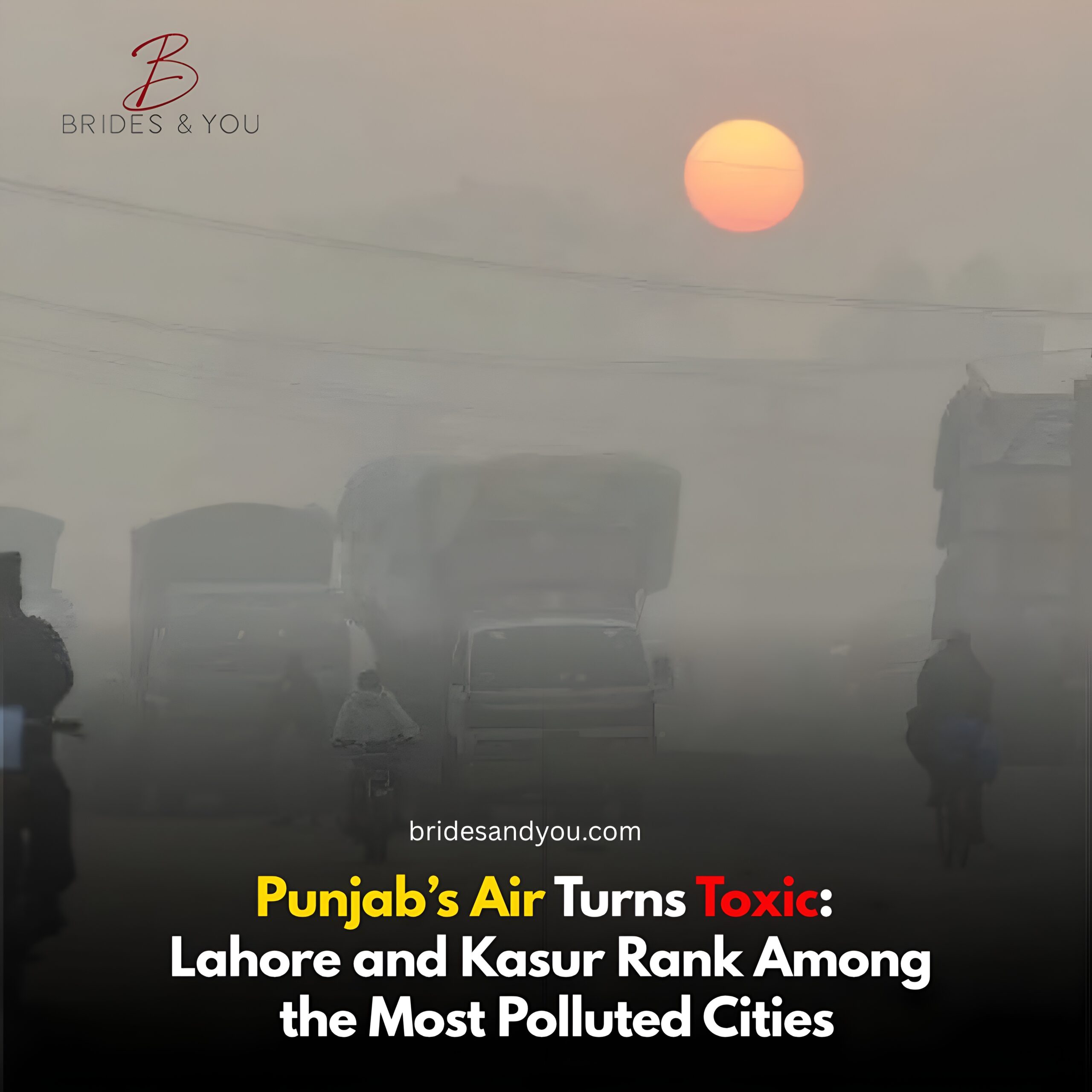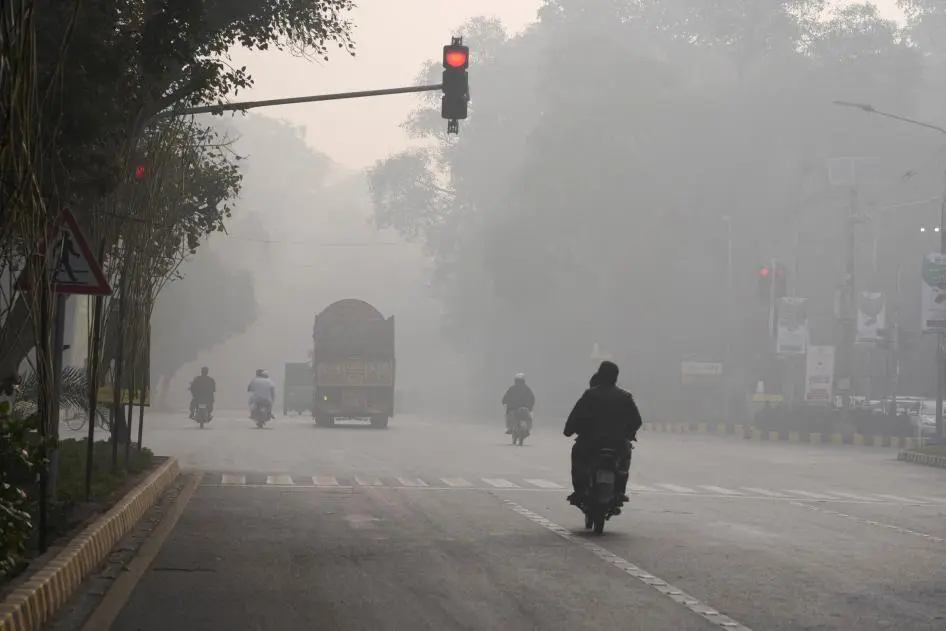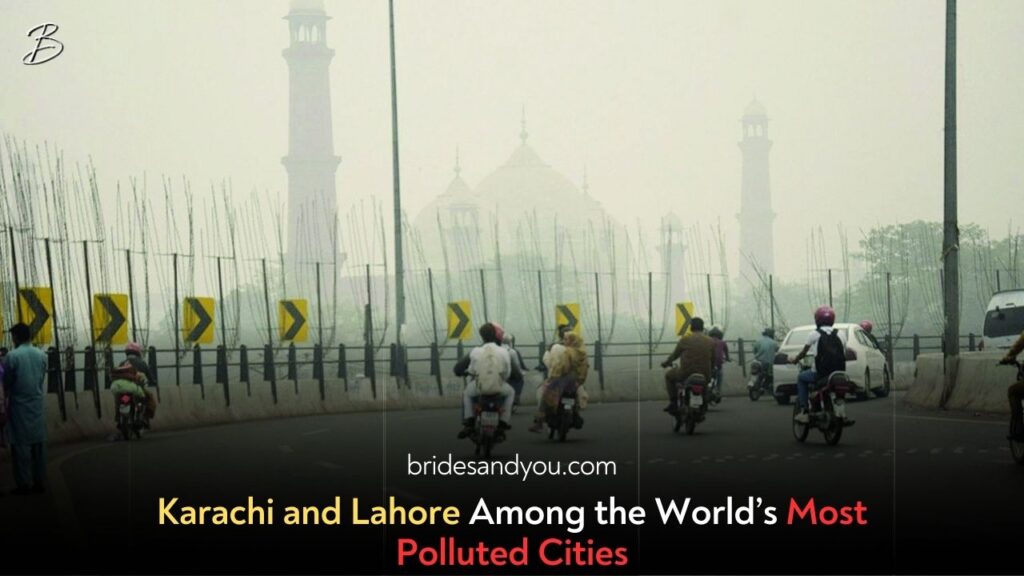Now Reading: Punjab Skies Turn Toxic as Lahore and Kasur Among Most Polluted Cities
-
01
Punjab Skies Turn Toxic as Lahore and Kasur Among Most Polluted Cities
Punjab Skies Turn Toxic as Lahore and Kasur Among Most Polluted Cities

The Punjab skies turn toxic as thick layers of smog engulf major cities, leaving residents struggling to breathe. On Saturday morning, Lahore, Kasur, and several other districts recorded hazardous air quality levels, prompting health warnings and urgent government action.
According to data from the International Environmental Monitoring Agency IQAir, air pollution in Punjab has reached alarming levels. The Air Quality Index (AQI) hit the maximum value of 500 in Dera Ghazi Khan and Kasur, making them some of the most polluted cities in the world.

Lahore’s Air Quality Hits Dangerous Levels
Lahore, often considered Pakistan’s pollution capital, saw an AQI of 385 in the morning, which later rose to 400 by the afternoon. Various parts of the city reported dangerously high readings, with Civil Secretariat recording 1018 AQI, Wildlife Parks 997, and Forest Department 820.
Official data from the Environment Protection Department (EPD) painted a similarly grim picture:
- Shahdara, Multan Road, GT Road – 500 AQI
- Burki Road – 396 AQI
- Egerton Road – 377 AQI
- Kahna – 365 AQI
These figures clearly indicate that Lahore’s air has become unbreathable, with pollution levels several times higher than the safe limits set by the World Health Organization (WHO).
Kasur and Gujranwala Face Severe Smog
While Lahore continues to grab headlines for pollution, Kasur and Gujranwala are facing equally severe conditions. Kasur recorded a staggering 500 AQI, and Gujranwala reached 442, surpassing many global cities known for their poor air.
Experts attribute this situation to a mix of factors cross-border wind pollution, stagnant air, and burning of crop residue in nearby regions. The low wind speeds (1–4 km/h) and absence of rainfall have further trapped pollutants close to the ground, turning the sky grey and the air poisonous.
Experts Warn of Worsening Smog Conditions
Environmental expert Maryam Shah, a member of the Pakistan Air Quality Initiative, noted that pollution levels in Punjab are returning to the same alarming figures seen in 2024. “We are entering November the peak smog month with dangerously high baseline pollution levels,” she warned.
Experts fear that if the current trend continues, Punjab may experience another severe smog episode similar to the one that crippled life last year. The combination of pollutant buildup and unfavorable weather patterns has created a perfect storm for another air quality crisis.
Government Launches Anti-Smog Operations
Under the leadership of Chief Minister Maryam Nawaz, the Punjab government has initiated an aggressive anti-smog operation. The Environment Protection Department (EPD) is working closely with traffic police, city administrations, and industrial inspectors to reduce emissions.
Key measures include:
- Water sprinkling on major roads to settle dust
- Traffic regulation to reduce vehicle emissions
- Industrial inspections to control factory smoke
- Continuous air monitoring using advanced sensors
Authorities are also considering temporary closures of schools and offices if the situation worsens further.
Public Health Warning: Stay Indoors and Wear Masks
With air pollution reaching hazardous levels, the government and health experts are urging citizens to stay indoors, avoid unnecessary travel, and wear protective masks when going outside.
Exposure to such high pollution levels can cause severe health issues including:
- Respiratory problems
- Eye irritation
- Headaches and fatigue
- Asthma attacks
- Heart complications
Parents are especially advised to keep children indoors, as they are more vulnerable to fine particulate matter (PM2.5), which can enter the lungs and bloodstream.
What Needs to Change
While emergency measures are necessary, experts emphasize that long-term solutions are the only way to truly fix Punjab’s pollution crisis. These include:
- Encouraging public transport and electric vehicles
- Strict control on crop burning
- Implementation of industrial emission standards
- Development of green spaces and urban forests
Without consistent enforcement and public awareness, Punjab’s skies will continue to remain toxic every winter.
Conclusion
The fact that Punjab skies turn toxic every year is no longer a surprise it’s a recurring tragedy. Cities like Lahore, Kasur, and Gujranwala are suffering because of unchecked pollution, lack of urban planning, and seasonal agricultural burning.
As authorities take short-term steps to control the situation, it’s time for both the government and citizens to work together for cleaner air. Every breath matters and every action counts.













